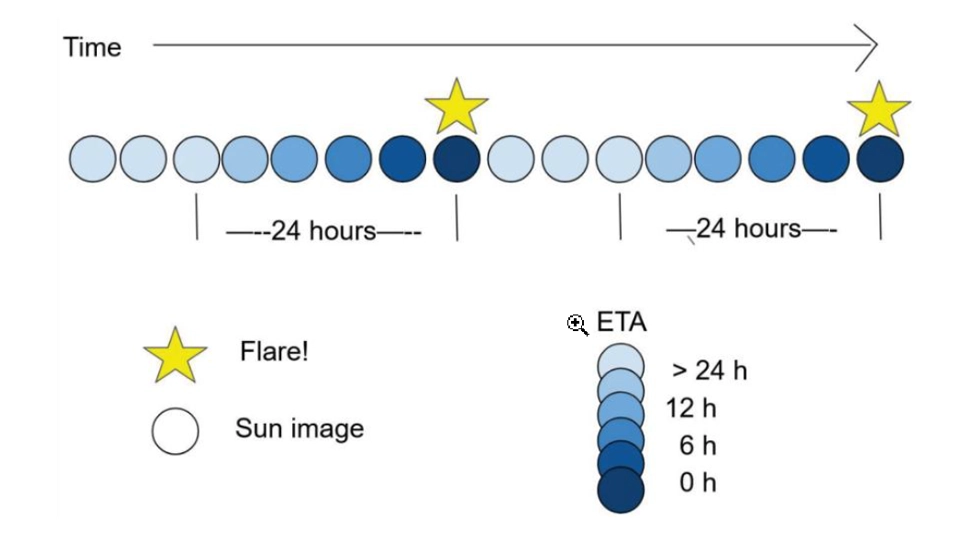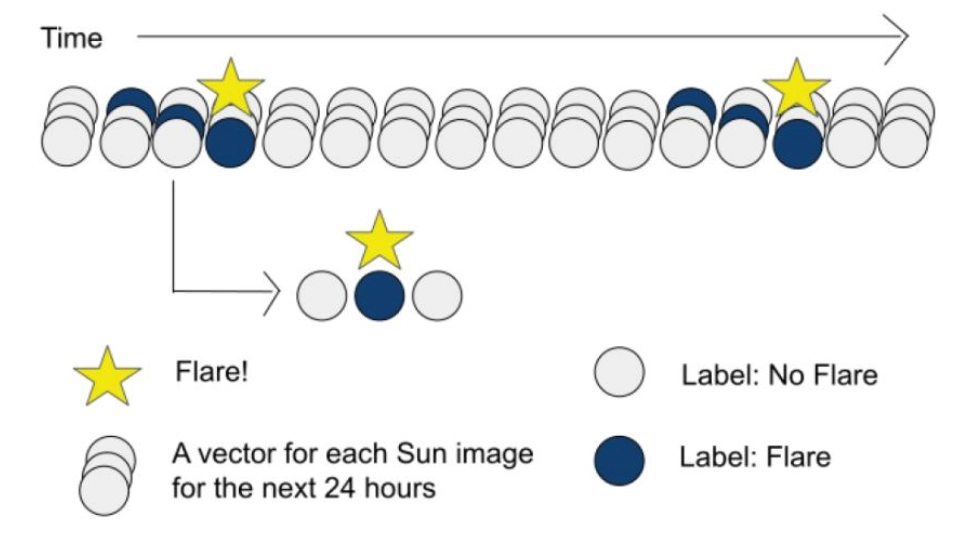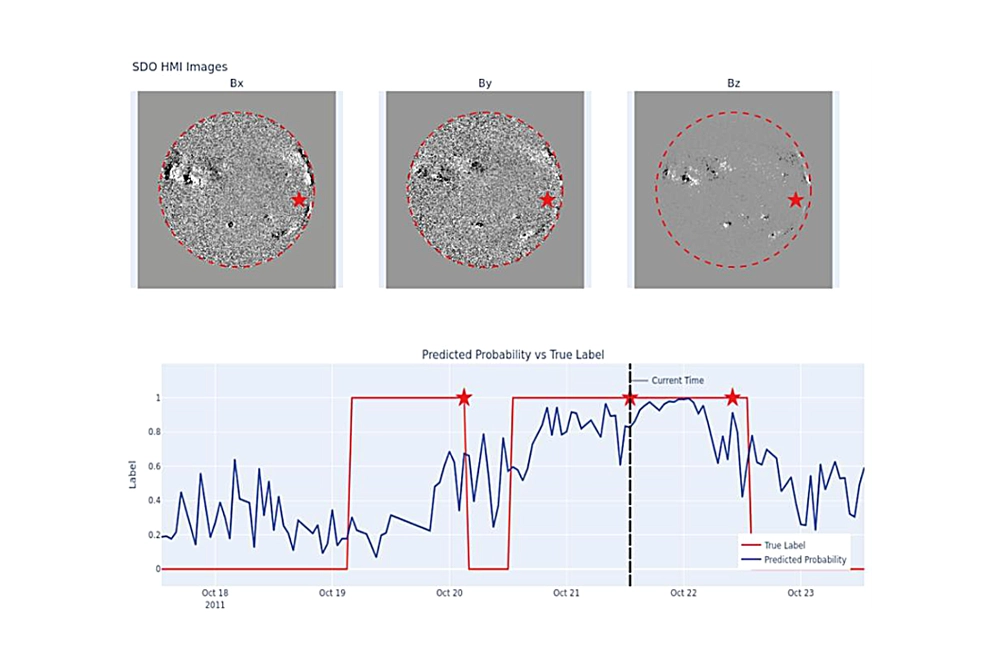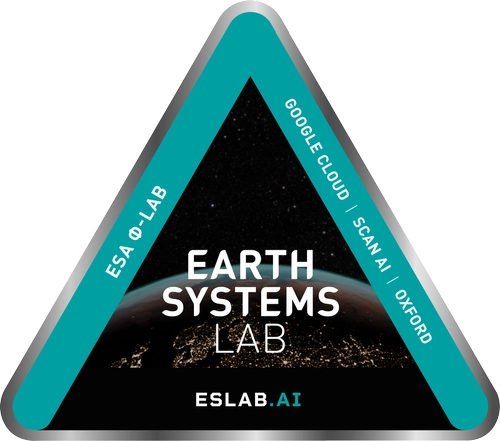Earth Systems Lab (ESL) by FDL Europe, applies AI technologies to space science, to push the frontiers of research and develop new tools to help solve some of the biggest challenges that humanity faces. These include the effects of climate change, predicting space weather, improving disaster response and identifying meteorites that could hold the key to the history of our universe.
FDL Europe is a public-private partnership with the European Space Agency (ESA) and Trillium Technologies. It works with commercial partners such as Scan, NVIDIA, IBM, Google, Airbus amongst others to provide expertise and the computing resources necessary for rapid experimentation and iteration in data intensive areas.
ESL 2024 was a research sprint hosted by the University of Oxford, taking place over a period of eight weeks in autumn 2024. The interdisciplinary teams address tightly defined problems and the format encourages rapid iteration and prototyping to create meaningful outputs to the space program and humanity.

















Project Background
Coronal Mass Ejections (CMEs) are large-scale solar events that release vast quantities of charged particles into space. When these particles reach Earth, they can cause significant damage to critical infrastructure, including satellite systems, power grids, and communication networks. A single, major CME event could lead to widespread disruptions, with economic damages estimated at up to $2.6tn, and recovery efforts extending over two years. As global dependence on technology grows, particularly in electronics and satellite-based communications, the need for an advanced early-warning system is increasingly urgent.
Solar flares, often precursors to CMEs, are sudden bursts of energy resulting from magnetic activity on the Sun’s surface. Accurately forecasting solar flares is a first key step in predicting potential CMEs, providing the advanced lead time for space agencies, governments, and infrastructure operators to take protective measures. However, forecasting solar flares and CMEs presents significant scientific and technical challenges, as the Sun’s magnetic field is highly dynamic and complex as it goes through the solar cycle, and our understanding of solar activity remains incomplete as the amount of activity varies in different cycles.
A further major limitation is the current observational infrastructure. Most real-time solar observations come from spacecraft positioned at the first Lagrange point (L1) - Lagrange points are positions in space where the gravitational forces of a two-body system like the Sun and Earth produce enhanced regions of attraction and repulsion - L1 lies between the Earth and the Sun. Observations from L1 are useful for solar flare predictions because this position provides a direct line of sight to the Sun, observing solar regions as they face Earth. However, large solar structures such as CMEs extend above or around active regions, so detection of these structures becomes a challenge as in many cases, they are difficult to observe from the front-facing view provided by L1.
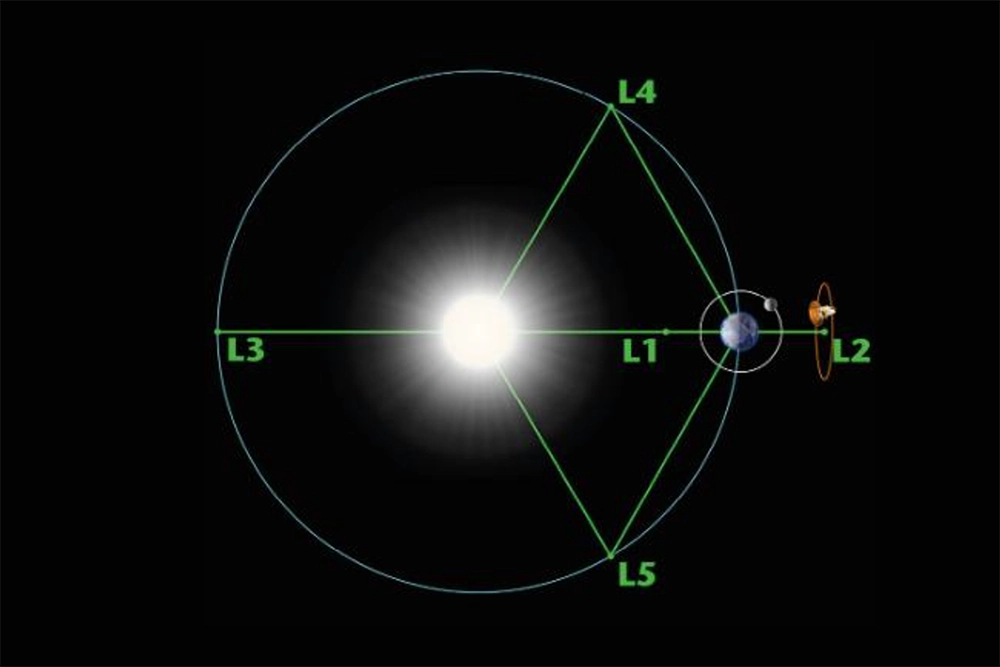
The above diagram shows how observations from an angle, such as from L5, would provide a better perspective on whether a structure is forming above an active region, and to comprehensively understand the structure. The L5 position can provide a more complete view on a certain region, compared to one from the L1 position, as illustrated below where the view of the Sun from L5 (left) and Sun seen from L1, geometrically projected onto the view from L5 (right). It demonstrates that the regions at the border of the Sun in L1 are smeared due to the geometrical projection. This implies a loss of spatial resolution due to the curvature of the Sun at its borders, so being able to observe the Sun from different angles would mitigate this problem.
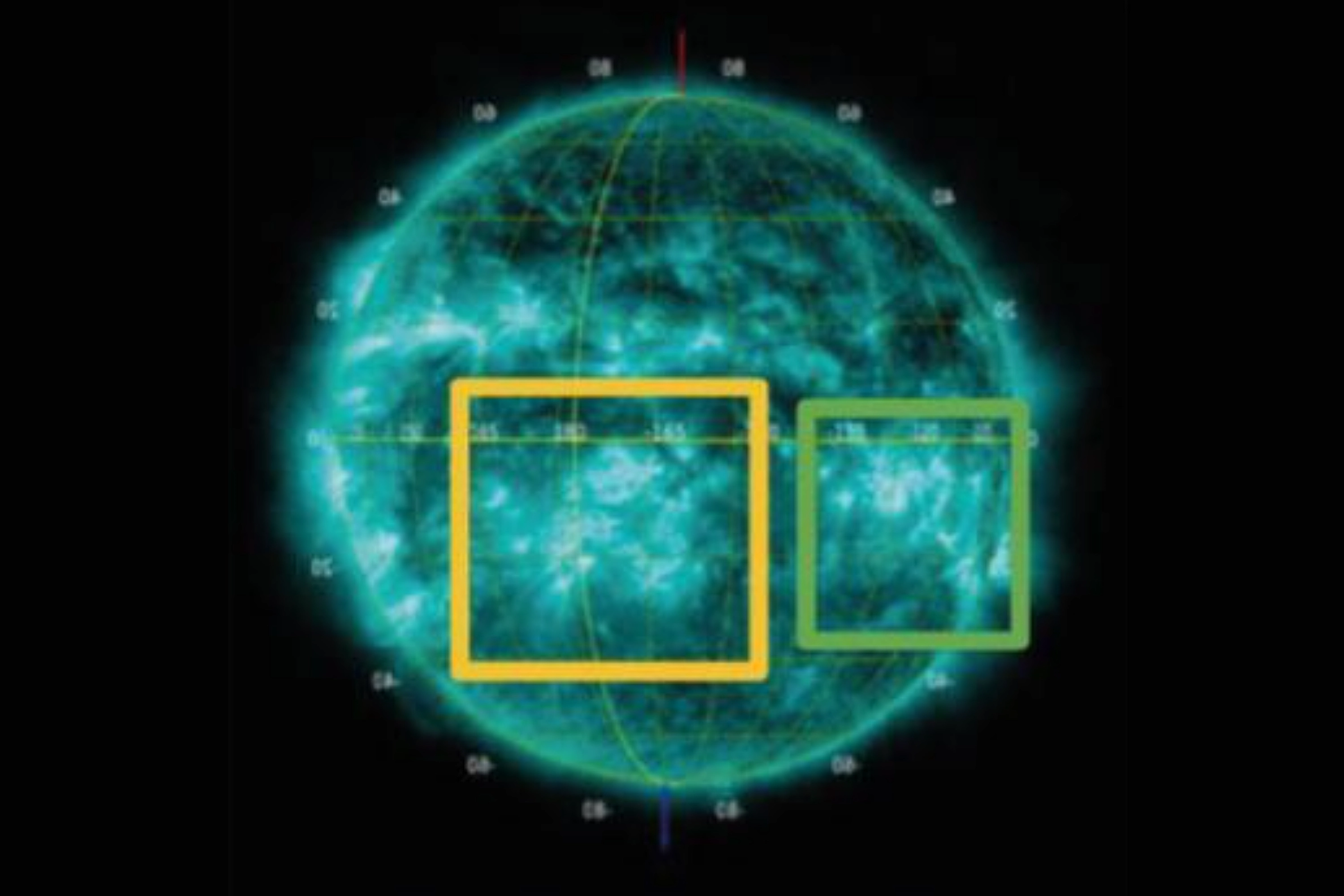
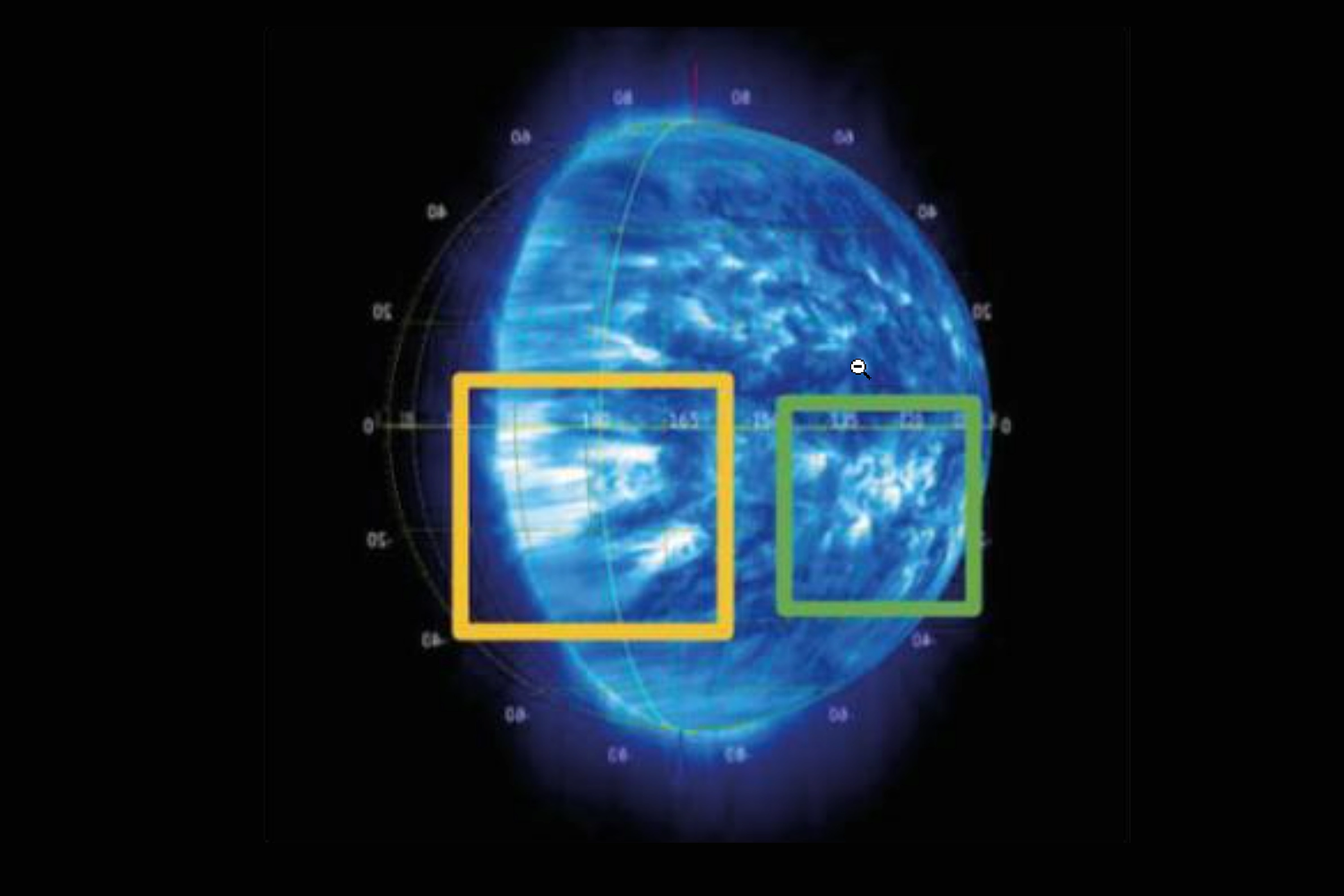
Furthermore, large solar flares and CMEs are relatively rare events, making it difficult to collect enough observational data to train and validate predictive models. Therefore, extending the current state-of-the-art forecast lead times, and improving accuracy will require innovative approaches, including leveraging new observational technologies and advanced computational methods.
Project Approach
At present, the prediction of solar flares relies on satellite observations and computational models. Open data policies from space agencies such as NASA and ESA provide essential access to data for monitoring solar activity. However, current predictive techniques remain limited, in part due to most models focus on analysing a single data type from a single mission, without integrating multiple related data sources, such as combining both magnetograms and EUV images or incorporating additional sensory signals. To overcome these current limitations, the upcoming ESA Vigil mission aims to provide a critical advancement. The first satellite is scheduled for launch in 2031, and will be positioned at the fifth Lagrange point (L5), maintaining a stable orbit, and offering a continuous and unobstructed view of the Sun and the region of space between the Sun and Earth. Due to the rotation of the Sun, Vigil’s unique vantage point of 60° behind Earth will allow for earlier detection of solar eruptions, than current satellite systems. To fully harness the potential of future Vigil data, the ESL team proposed an approach that would use numerous multi-sensor datasets from various observational viewpoints to build a framework as the basis for an advanced machine (ML) model that could be then deployed aboard Vigil to shorten prediction timeframes.
The basis of the framework began with data from existing satellites that observe the Sun. These included Solar Dynamics Observatory (SDO), Solar Orbiter (SolO), Solar TErrestrial RElations Observatory (STEREO-A and -B) and Solar and Heliospheric Observatory (SOHO), plus a range of Geostationary Operational Environmental Satellites (GOES). The datasets from these satellites were selected based on their relevance, resolution, and historical significance in capturing solar phenomena, and encompassed several types including Extreme Ultraviolet (EUV), Magnetogram and X-ray, with each offering unique perspectives and being complementary to the others to provide a more comprehensive view of solar activity.
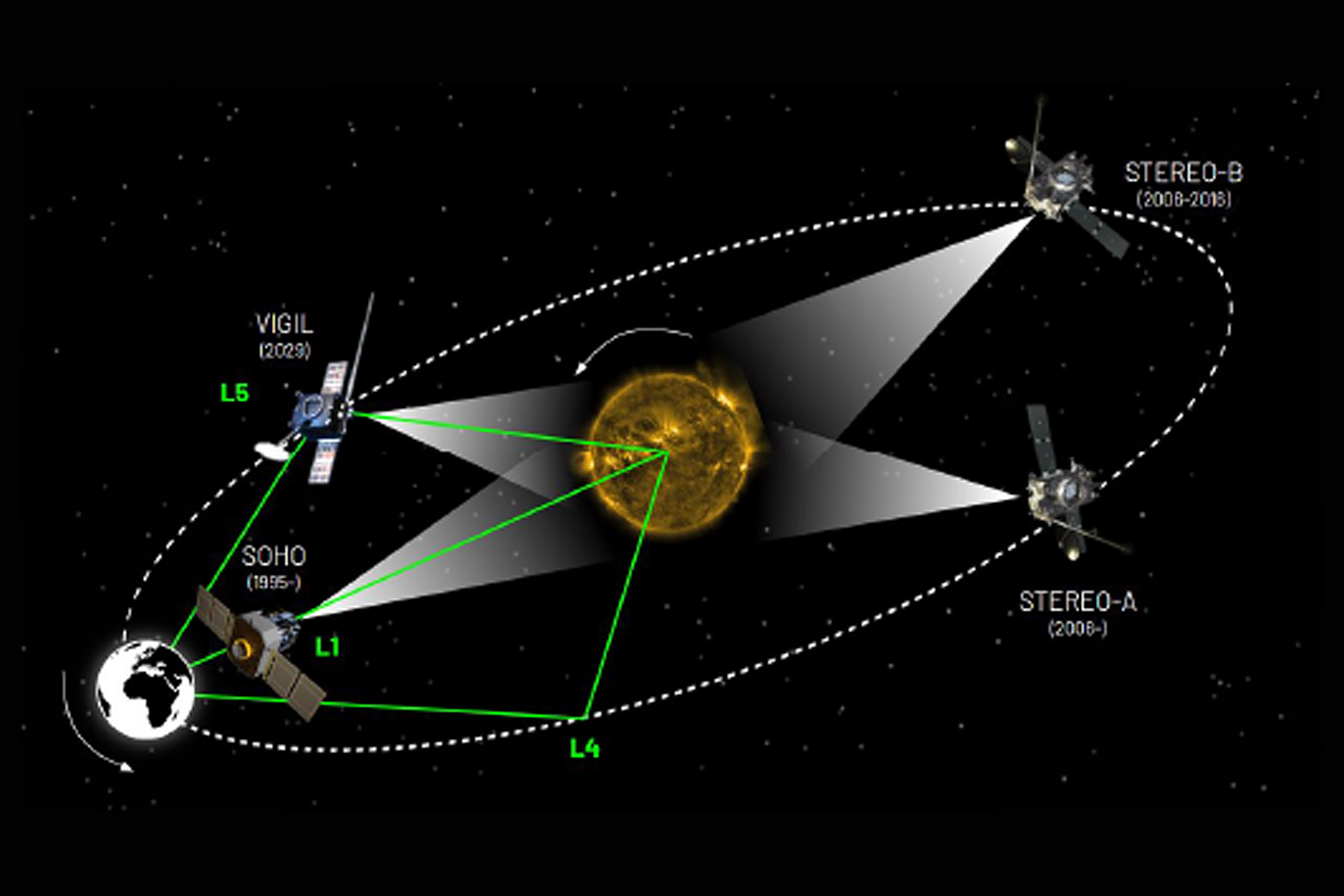
Whilst the team developed the model for solar flare and CME predictions, they were aware of the need to experiment with various inputs, models, and labelling strategies to identify the most effective combination. The different datasets capture different aspects of solar activity, and were trialed with traditional statistical models, neural networks and hybrid approaches to understand which algorithms best represent the underlying patterns in the data, as illustrated below.
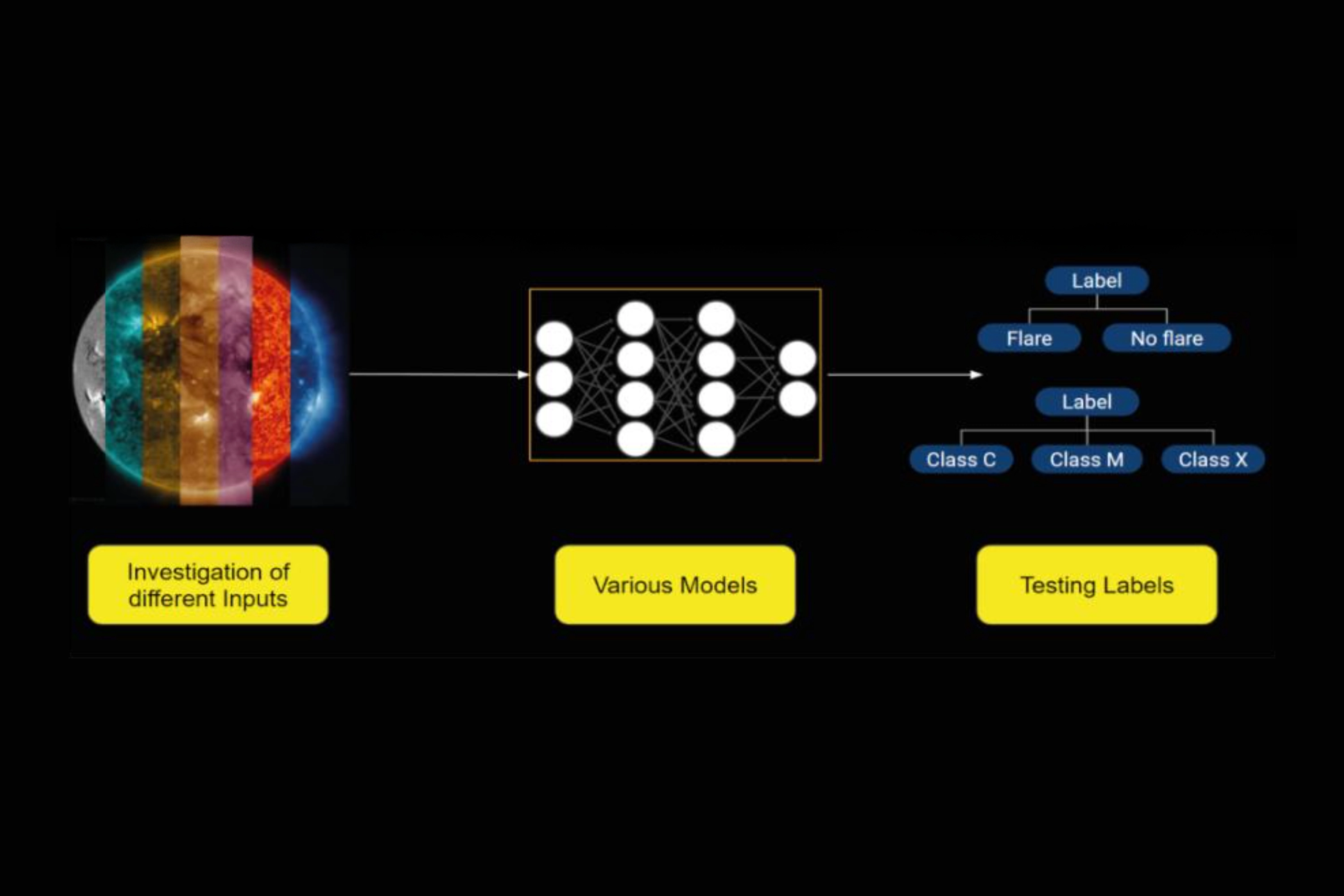
The optimal combination of parameters resulted in a framework the team called HelioWatch. HelioWatch provided the infrastructure to efficiently run a variety of experiments, using different datasets simultaneously, and compare the results. In particular, a key advantage of HelioWatch lay in its automatic temporal alignment of datasets, ensuring that data from different spacecraft or instruments - each with varying cadences, latencies, and time shifts - were synchronised according to a configuration file. This automated process made it straightforward to work with data from new missions or combine observations from existing ones without the need for manual adjustments. The HelioWatch workflow is summarised in the diagram below.

Additionally, the framework accommodated both binary forecasting over defined time windows, and more complex multi-timestep forecasting, where the prediction horizon can vary depending on the study’s needs. The ability to fine-tune how different temporal steps were extracted and processed ensured that the HelioWatch could support a wide variety of forecasting and detection requirements.
Conclusions
In this project, the team developed a flexible, scalable and modular framework, HelioWatch, to advance the prediction of solar flares and CMEs. They concluded that SDO is the best among existing datasets for training models for flare predictions, providing a vast amount of full-disk data with high cadence over multiple years, and HMI magnetograms offer the best images. They also concluded that there is currently insufficient STEREO and SolO data to serve as a Vigil proxy for model training, but additional data from the L5 Lagrange point would vastly benefit future models. Whilst their existing HelioWatch framework did successfully match the current state-of-the-art performance, they noted its key strength lies in its capacity to accommodate the continuous evolution of the field, integrating multimodal datasets and supporting comprehensive model benchmarking.
You can learn more about Earth Systems Lab 2024 research and this Early Warning Signs for Solar Eruptions with Vigil project by reading the ESL 2024 RESULTS BOOKLET, where a summary, poster and full technical memorandum can be viewed and downloaded.
The Scan Partnership
Scan is a major supporter of ESL 2024 and FDL Europe, building on its participation in the previous four years events. As an NVIDIA Elite Solution Provider Scan contributes multiple DGX supercomputers in order to facilitate much of the machine learning and deep learning development and training required during the research sprint period.
Project Wins
Successful demonstration of HelioWatch framework in improving solar flare and CME detection
Proposal of a move away from binary flare labelling strategies to better regression or multi-timestep options
Time savings generated during eight-week research sprint due to access to GPU-accelerated DGX systems
Lorem ipsum dolor sit amet consectetur adipisicing elit. Sed, sint tempora. Vitae nobis vero nam dolorem id mollitia iusto recusandae suscipit delectus aspernatur? Magnam dignissimos rem minima in quod cupiditate nam nesciunt, non, voluptates maiores ad perspiciatis quas nostrum pariatur quae aspernatur itaque fuga ducimus. Ratione magnam eum maiores illo?

James Parr
Founder, FDL / CEO, Trillium Technologies
"FDL has established an impressive success rate for applied AI research output at an exceptional pace. Research outcomes are regularly accepted to respected journals, presented at scientific conferences and have been deployed on NASA and ESA initiatives - and in space."

Dan Parkinson
Director of Collaboration, Scan
"We are proud to be continuing our work with FDL and NVIDIA to support the ESL 2024 event for the fifth year running. It is a huge privilege to be associated with such ground-breaking research efforts in light of the challenges we all face when it comes to life-changing events like climate change and extreme weather."
Speak to an expert
You’ve seen how Scan continues to help the Earth Systems Lab and FDL Europe further its research into the climate change and space. Contact our expert AI team to discuss your project requirements.
phone_iphone Phone: 01204 474210
mail Email: [email protected]


